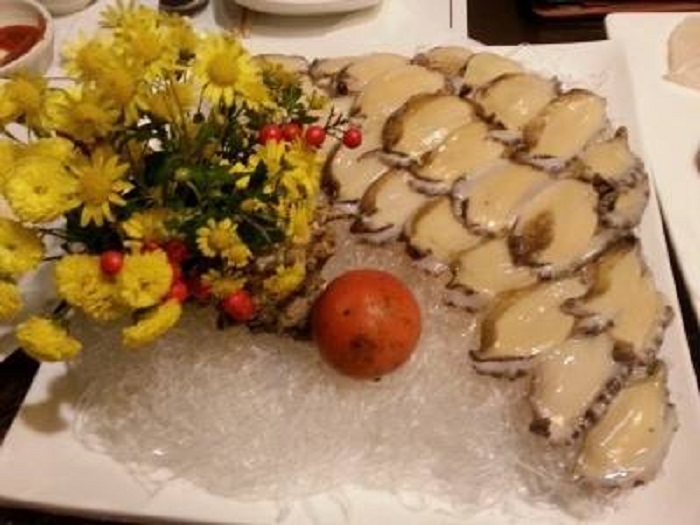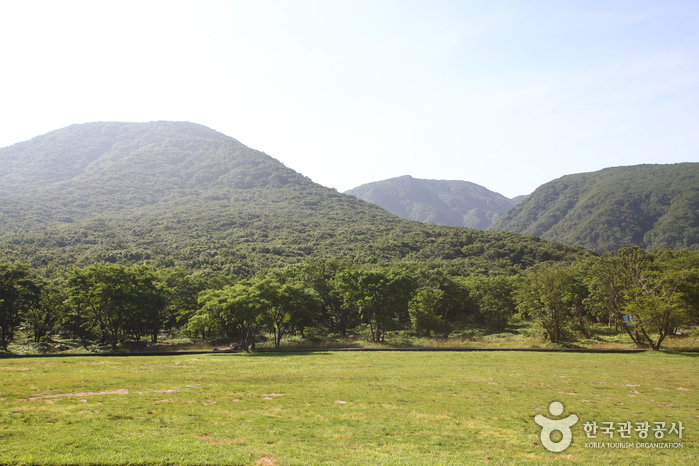Eouneul (어우늘)
15.8Km 2021-03-24
222, Yeonbuk-ro, Jeju-si, Jeju-do
+82-64-743-5131
This is a place that sells fusion abalone dishes. This Korean dishes restaurant is located in Jeju-si, Jeju-do. The representative menu is abalone hot stone pot rice.
JDC Duty Free - Jeju Airport Branch (JDC 면세점 (제주공항점))
15.9Km 2021-05-17
2, Gonghang-ro, Jeju-si, Jeju-do
+82-64-740-9900
Tailored to the needs of domestic and international tourists, JDC Duty Free offers a variety of luxury brand items, alcoholic beverages, and cigarettes. Customers can also place orders at JDC Duty Free before their visit. A wide range of currencies (KRW, USD, JPY and more), credit cards, and traveler's checks are welcomed. The JDC Duty Free shop is especially perfect for travelers who have plenty of time before their departure.
Moise Haejangguk (모이세해장국)
15.9Km 2021-04-17
221, Yeonbuk-ro, Jeju-si, Jeju-do
+82-64-746-5128
It is a restaurant that serves Haejangguk, made more delicious when served with egg. The best menu at this restaurant is hangover soup. This Korean dishes restaurant is located in Jeju-si, Jeju-do.
Olive Young - Jeju Int’l Airport Branch [Tax Refund Shop] (올리브영 제주국제공항)
15.9Km 2024-04-18
1F, 2, Gonghang-ro, Jeju-si, Jeju-do
-
Jeju Glass Castle (제주 유리의성)
15.9Km 2024-03-15
462 Nokchabunjae-ro, Hangyeong-myeon, Jeju-si, Jeju-do
+82-64-772-7777
Jeju Glass Castle is a theme park centered around glass art, featuring exhibition halls, gardens, and an array of glass sculptures. The park showcases nearly 250 glass structures across six different areas, which include the world's first glass maze, the world's largest glass globe, and various glass creations such as diamonds, fences, and bridges. Additionally, it houses works by famous glass artists from around the world, including those from Italy, Czech Republic, and Japan.
Hallasan Mountain [National Geopark] (한라산 (제주도 국가지질공원))
15.9Km 2024-12-03
2070-61 1100-ro, Jeju-si, Jeju-do
+82-64-710-3945
Hallasan Mountain stands proudly at the center of Jeju Island and is perhaps the island’s most memorable landmark. Also called Yeongjusan Mountain, meaning "mountain high enough to pull the galaxy," Hallasan Mountain is widely known by scientists for its geological value. Designated as a national park in 1970, there are 368 parasitic cones called "oreum" (Jeju dialect meaning peak) around the main mountain.
Hallasan Mountain is famous for its vertical ecosystem of plants that results from the varying temperatures along the mountainside. Over 1,800 kinds of plants and 4,000 species of animals (3,300 species of insects) have been identified; to explore the mountain's treasures, simply follow one of the well-developed hiking trails.
Hallasan Mountain Trekking (한라산 트레킹)
15.9Km 2020-06-25
2070-61, 1100-ro, Jeju-si, Jeju-do
+82-64-740-6000
Situated on the southern tip of the Korean Peninsula, Hallasan is 1,950 meters in x_height and is the highest mountain in South Korea. Formed from volcanic activity, the mountain is a dormant volcano made mostly of basalt. Home to the magnificent Baekrokdam (lake-filled crater), the mountainside is covered with alpine flora and lush trees.
The mountain is characterized by majestic cliffs, steep slopes, interesting rock formations, and, in particular, myriads of colorful azaleas. There are over 360 small mountains (uniquely-shaped volcanic mountains called “Oreum” in Jeju dialect) surrounding Halla Mountain that offer new delights to visitors with the coming of each new season. Along with Hallasan, the oreums were officially named the Hallasan Natural Protection Area (Natural Monument No.12) in 1966.
There are six hiking trails along Hallasan. Seongpanak Trail on the east and Gwaneumsa Trail in the north go all the way up to the summit (Baekrokdam). Those looking for a less rigorous hike are advised to take the shorter trails reaching midway up the mountain. All trails are relatively short (less than 10 kilometers) and can be hiked in less than a day. Visitors are advised, however, to start early in the morning if planning on hiking up to the summit and to check official operating hours, as some trails are only open during certain hours of the day. Keep reading for information on some of the most popular trails.
* Gwaneumsa Trail (North)—Summit Trail
Gwaneumsa Trail offers hikers the best view of Hallasan’s deep valleys and stunning terrain. Midway along the trail is Guringul (a lava cave) and Tamna Valley. Tamna Valley is especially beautiful during the fall when the leaves are changing and during the winter when the entire area lays under a dusting of snow.
* Seongpanak Trail (East)—Summit Trail
This relatively long, gently sloping trail is perfect for beginners. Lush broadleaf trees give shade from the beating sun and in spring the azaleas bloom and turn the mountainside into a dazzling array of color.
* Eorimok Trail (Northwest)
This short trail is another relatively easy trail for beginners. In spring, the nearby meadows are adorned with red royal azaleas. From the stone pathway to Mansedongsan visitors can catch a breathtaking panoramic view of the countryside and the island’s signature Oreums.
* Yeongsil Trail (Southwest)
As the shortest trail in Hallasan, this trail boasts Yeongsilgiam (a spectacular cliff with series of unusual rock formations). It is covered with azaleas and royal azaleas in spring and vibrant autumn foliage starting in October.
Tod’s - Shinsegae Simon Jeju Outlets Branch [Tax Refund Shop] (토즈 신세계사이먼 제주아울렛)
15.9Km 2024-06-26
38, Sinhwayeoksa-ro 304beon-gil, Andeok-myeon, Seogwipo-si, Jeju-do
-
Rockport - Shinsegae Simon Jeju Outlets Branch [Tax Refund Shop] (락포트 신세계사이먼 제주아울렛)
15.9Km 2024-06-27
38, Sinhwayeoksa-ro 304beon-gil, Andeok-myeon, Seogwipo-si, Jeju-do
-
Boss - Shinsegae Simon Jeju Outlets Branch [Tax Refund Shop] (보스 신세계사이먼 제주아울렛)
15.9Km 2024-06-26
38, Sinhwayeoksa-ro 304beon-gil, Andeok-myeon, Seogwipo-si, Jeju-do
-


![Olive Young - Jeju Int’l Airport Branch [Tax Refund Shop] (올리브영 제주국제공항)](http://tong.visitkorea.or.kr/cms/resource/46/2887046_image2_1.jpg)
![Hallasan Mountain [National Geopark] (한라산 (제주도 국가지질공원))](http://tong.visitkorea.or.kr/cms/resource/98/2870098_image2_1.jpg)

![Tod’s - Shinsegae Simon Jeju Outlets Branch [Tax Refund Shop] (토즈 신세계사이먼 제주아울렛)](http://tong.visitkorea.or.kr/cms/resource/22/3313422_image2_1.jpg)
![Rockport - Shinsegae Simon Jeju Outlets Branch [Tax Refund Shop] (락포트 신세계사이먼 제주아울렛)](http://tong.visitkorea.or.kr/cms/resource/02/3313402_image2_1.jpeg)
![Boss - Shinsegae Simon Jeju Outlets Branch [Tax Refund Shop] (보스 신세계사이먼 제주아울렛)](http://tong.visitkorea.or.kr/cms/resource/26/3313226_image2_1.jpg)
 English
English
 한국어
한국어 日本語
日本語 中文(简体)
中文(简体) Deutsch
Deutsch Français
Français Español
Español Русский
Русский